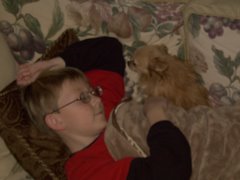Symbols are uses of language that connect imagination between our ideas and our senses and may reveal similarities between things that we never associated together before.
Figures of Speech
(Figurative language)
Simile, when "as" is used. "Her eyes were as blue as the see."
Metaphor, a straight forward comparison. "Grandma's lap was a big comfy couch."
Extended Metaphor, more detailed and complex and tends to underscore an entire work.
SYMBOL!
Can put together two things that are actually somewhat different, yet bring a judgement or visual element to the reader that brings a flash idea about how something is or what it stands for.
i.e. A rose....can be a symbol of love, female beauty, a husband's appreciation or even hint at hidden cruelty (every rose has it's thorns).
A flag can be seen as a symbol for liberty or achievement.
Archetypes are "literary elements that recur in cultural and cross-cultural myth."
Sometime, clues are needed to establish connections and allow for individual interpretation of what is meant.
Snakes can be thought of as evil...yet "the snake in "The Jungle Book" is on the side of law and order."
An ALLEGORY is another extended symbol that "encompasses a whole work." Much like the whole Narnia collection of stories....symbols are constantly referring to religious themes, good, and bad, good conquering evil, and strife to realize strength.
Myths provide stories that attempt to explain an unknown reason for nature, and/or reasons to avoid certain behaviors.
"A good symbol cannot be extracted from a story" because it leaves a lasting image of what the story is all about. These symbols are "rich and complex."
"Young Goodman Brown" by Nathaniel HawthorneSet in Salem, probably around the days of the witch hunts..
Wowee...a truly dark story with so many symbols that I am sure I didn't even see most of them!
This man, Goodman Brown, leaves his fair wife at home one evening whole he leaves to attend to some pressing task. Why at night? And, into the forest he goes (dark, yet magical, maybe evil, supporting some secret society or ceremony?). He is joined by another man, with a walking stick fashioned as a snake. This man seems to represent evil, though I do not know why Goodman Brown is in his company if Goodman Brown is on the side of good and righteous deeds.
Young Goodman Brown finds that his wife is part of a witch's ceremony...and he doesn't kill anyone (this time!, it seems he has before...to fight for good and erase evil).
He says to Faith, his wife, before she finishes the ceremony, "Look up to heaven, and resist the Wicked one!"
The wicked one must be a reference to evil or the devil.
Then, Goodman Brown wakes up the next day and it is as if nothing happened the night before. Was it a dream? He can barely look at his wife without thinking she is part of the "evil"...he lives out his life in despair, and dies, leaving his family after years of discontent, mistrust, and faithlessness.
This was a hard story to read. Not that the text was difficult, just so rife with statements that left me wondering what was meant! I kept wanting someone to come up to me and explain each and every symbol and what's really going on. This man was so intent on fighting evil that he seemed to become almost obsessed with it. And, he held himself in quite high regards....like it was his destiny to decide who was evil and get rid of them. Dangerous ground, a real slippery slope of vigilante behavior and murder....not good conquering evil.
What is sin? What makes it so? And, who decides what's best for others? The "apple" is there for all of us, and one person should not be the one in charge of what he feels is right and wrong.
Thursday, February 15, 2007
Subscribe to:
Post Comments (Atom)



No comments:
Post a Comment